Types of Animal Traps
In additions to snares, a walk in the countryside will reveal other types of animal traps. The two main types of traps you are likely to see are Spring Traps and Cage Traps.
Spring Traps

DOC Trap – DOC 150, DOC 200 & DOC 250
DOC traps are a family of spring traps approved for use in killing grey squirrels, rats, mink, stoats and weasels in the UK. They are intended to replace Fenn or Springer / Solway traps.
There are three models in production, the DOC 150, 200 and 250. The model numbers refer to the approximate width of the tunnel in millimetres that traps must be placed in
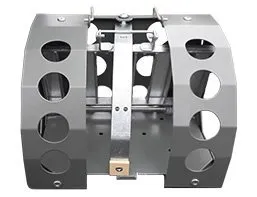
Tully Trap
The Tully Trap was included in the Spring Traps Approval Order for England, Scotland and Wales from 1 January 2019, 3 January 2019 and 1 February 2019 respectively for the purpose of killing stoats, weasels and rats. As with the DOC traps, this trap is another Fenn type trap replacement.

Fenn Trap
Fenn Traps was the most popular spring trap used by gamekeepers. Sometimes referred to as Solway Spring Trap, they come in two sizes, MK4 or MK6. It is an offence to set any spring trap in the open.
Gamekeepers have been known to place Fenn traps on a fence post to kill birds of prey, this is known as a pole trap.

Body Grip
Body Grip traps are less common than Fenn Traps but keep a look out for them.
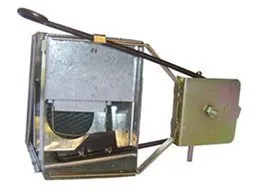
Kania Trap 2000
Kania Trap 2000 designed originally in Canada to kill racoons.
Approved by DEFRA. However, this trap kills woodpeckers when attached to trees. Serious Health & Safety issues with this trap. Expensive to replace.
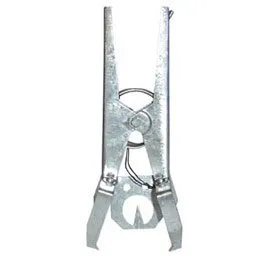
Scissor Style Mole Trap
The Scissor Style Mole Trap is just one type of mole trap used by farmers. Often you will only see the handles sticking out of the ground.
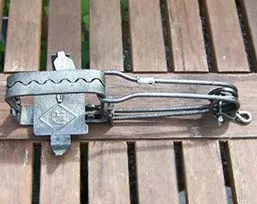
Gin Trap
A Gin Trap is mechanical device designed to catch an animal by the leg using spring operated jaws either with or without a serrated edge or teeth. They come in a variety of shapes and sizes. The use of gin traps has been illegal in the UK since 1958, however they are causing carnage today to wildlife and pets.
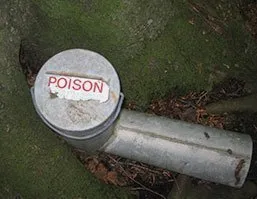
The Hopper
The Hopper isn’t a trap although it could be confused for one. It will contain poison bait. They make come in several different designs.
Cage Traps
Although classed as ‘humane’, cage traps can cause fear, discomfort, frustration, injury and stress over a period of several hours or even days.
Cage-traps come in various sizes, depending on the target species. All are basically a box constructed of wire mesh with one or two open ends. The doors are triggered by a foot plate or hook from which a bait may be suspended.

Fox Cage
This Fox Cage Trap is just one example of a cage trap. Rabbit and squirrel cage traps will be similar but smaller. Often they are hidden from public view behind a wall over covered by wood.
Bird Cage Traps
The use of birds traps in outside the range of our campaign activity, however we’ve included the most common you are likely to see.
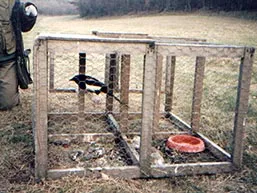
Larsen Trap
This is a Larsen Trap which uses a live corvid (Magpie, Crow or Rook) to attract other corvids. If you find a bird of prey in one contact the RSPB immediately. Photo © Against Corvid Traps
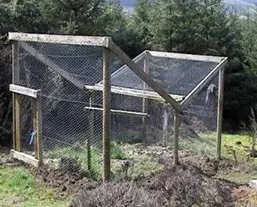
Multi-Trap / Ladder Trap
This is a Multi-Crow Ladder Trap. Simialr idea as the Larsen Trap but without the live decoy and on a bigger scale. Photo © Against Corvid Traps
